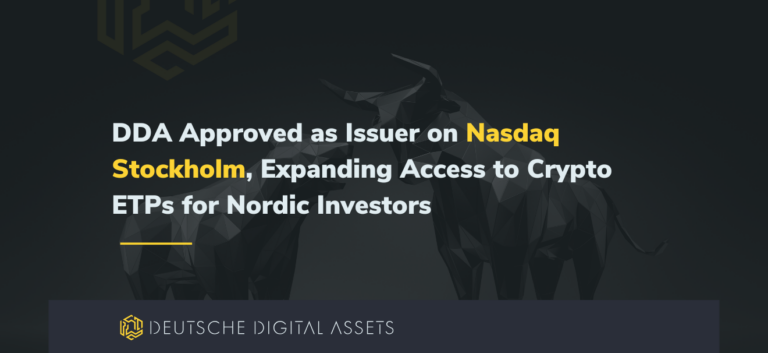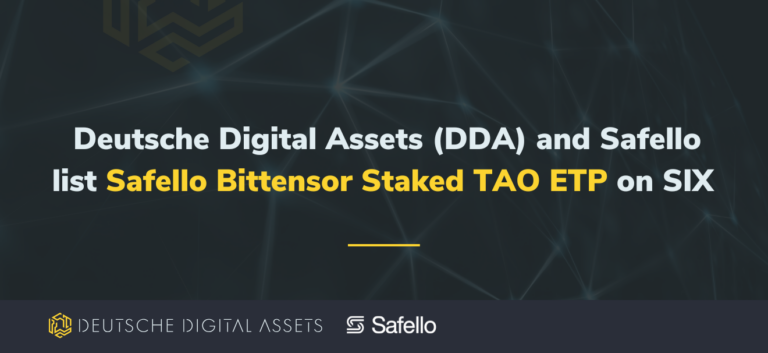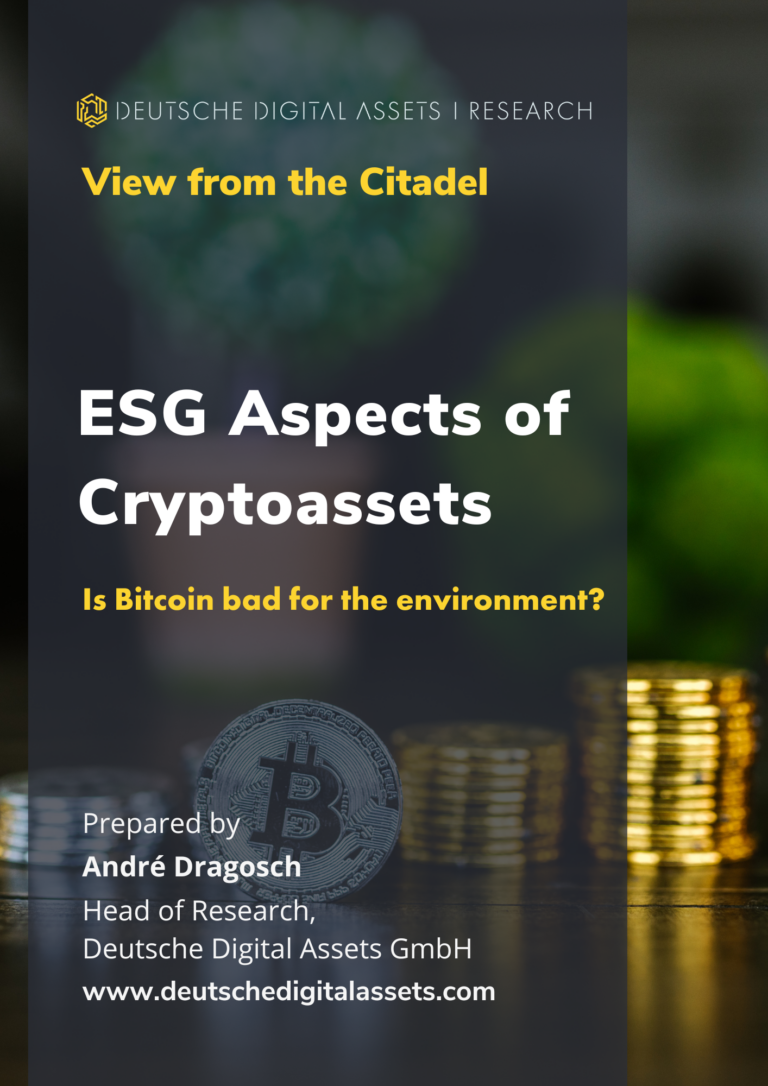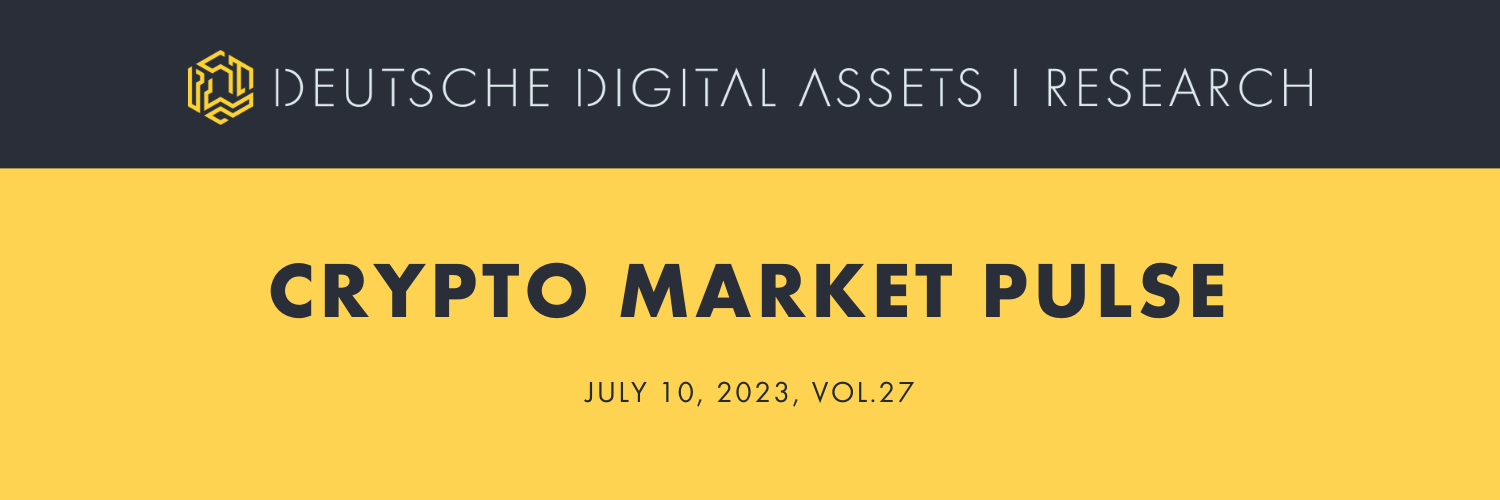
Cryptoassets take a breather after Blackrock euphoria alongside traditional assets as interest rates increase.
DDA Crypto Market Pulse, July 10, 2023
by André Dragosch, Head of Research
Key Takeaways
- Most asset classes including cryptoassets performed poorly last week due to the ongoing tightening in monetary policy
- Our in-house Crypto Sentiment Index has reversed significantly from high levels
- In particular, altcoins were negatively affected by the latest developments as investors generally seemed to de-risk their exposures
Chart of the week
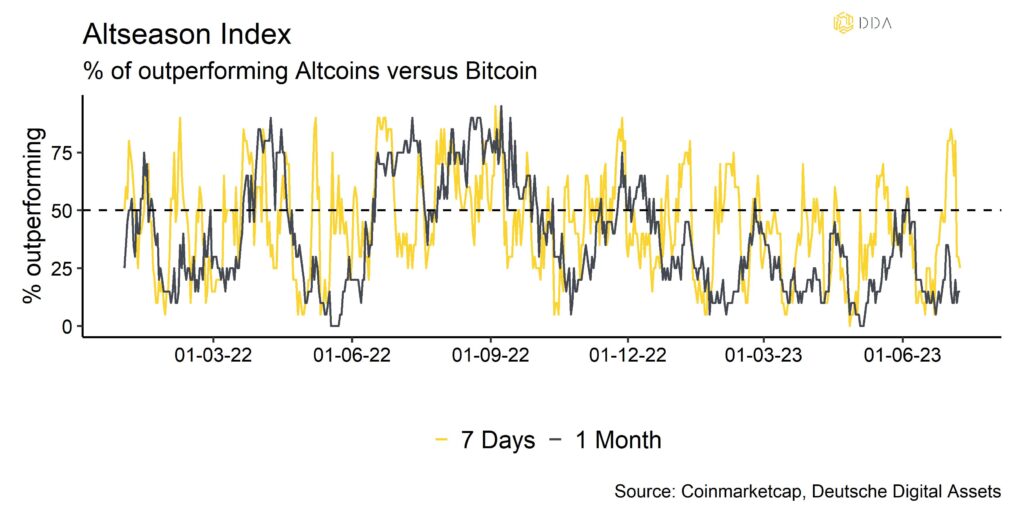
Cryptoasset Performance
Last week, cryptoassets took a breather as there was some de-risking in traditional assets due to a rise in interest rates.
More specifically, sovereign bond yields started to increase as the Fed reinforced its determination to raise interest rates after the June pause. Newest economic data have also raised the possibility of a soft landing and therefore a continuing increase in interest rates.
As a result, most asset classes including cryptoassets performed poorly due to the ongoing tightening in monetary policy. In particular, altcoins were negatively affected by the latest developments as investors generally seemed to de-risk their exposures (Chart-of-the-Week).

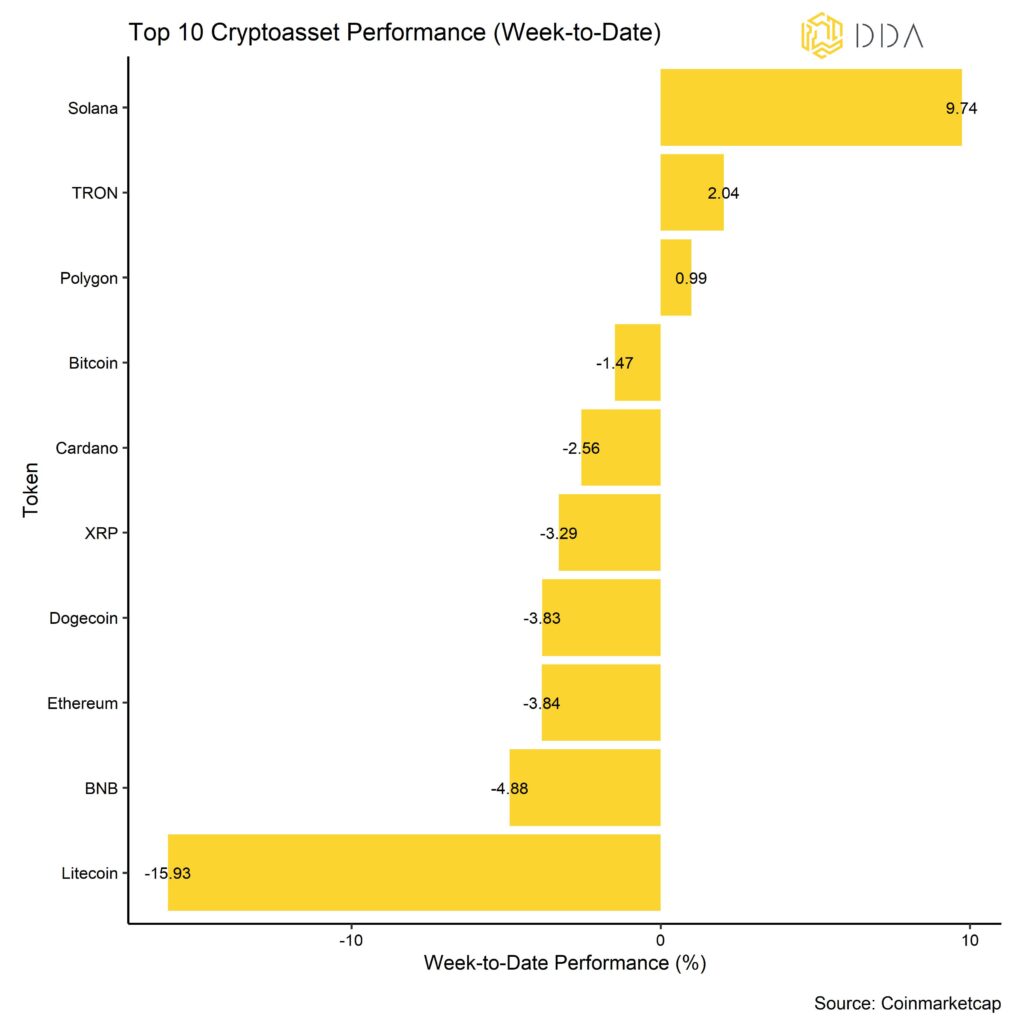
Cryptoassets were the worst performing asset class last week. Meanwhile, global equities and global bonds also retreated due to the increase in interest rates. In contrast, commodities managed to outperform.
Among the top 10 cryptoassets, Solana, TRON, and Polygon were the relative outperformers.
In this context, altcoin outperformance vis-à-vis Bitcoin significantly declined from its high levels seen at the beginning of July. Based on our set of tracked altcoins, only 25% of altcoins were able to outperform Bitcoin last week.
Crypto Market Sentiment
Our in-house Crypto Sentiment Index has significantly come off its recent highs as the positive post-Blackrock sentiment reversed somewhat. 11 out of 15 indicators are still above their short-term trend.
A reversal in sentiment was to be expected as the Crypto Sentiment Index had signalled overbought conditions.
Compared to last week, we saw major reversals to the downside in the BTC perpetual funding rate and the 25-delta option skew.
The Crypto Fear & Greed Index still remains in “Greed” territory as of this morning.
Performance dispersion among cryptoassets has stayed at high levels.
In general, high performance dispersion among cryptoassets implies that correlations among cryptoassets have decreased which means that cryptoassets are trading more on coin-specific factors.
At the same time, altcoin outperformance has decreased significantly last week and is now at only 25% of altcoins outperforming Bitcoin on a weekly basis.
In general, altcoin outperformance goes hand in hand with an increase in crypto dispersion, i.e. Bitcoin and altcoins are generally trading up during “altseason” with altcoins outperforming Bitcoin. Broader altcoin outperformance is usually a sign of increasing risk appetite and broader altcoin underperformance a sign of increasing risk aversion.
Crypto Asset Flows
Last week saw the persistent net inflows into global crypto ETPs.
In aggregate, we saw net fund inflows in the amount of +130.9 mn USD (week ending Friday).
Bitcoin funds attracted the lion’s chare of these inflows again with +133.5 mn USD of net inflows last week.
In contrast, Ethereum funds experienced net outflows (-1.9 mn USD) while other altcoin-based funds received net inflows (+1.9 mn USD).
Thematic & basket crypto funds struggled last week with -2.5 mn USD in net outflows.
Besides, the NAV discount of the biggest Bitcoin fund in the world – Grayscale Bitcoin Trust (GBTC) – has narrowed significantly to the highest level since May 2022 which also implies significant net inflows via this fund vehicle.
In contrast, the beta of global Hedge Funds to Bitcoin over the last 20 trading days was slightly negative, implying that global hedge funds have a negative net exposure to cryptoassets. However, the beta is still too small to consider it statistically significant. Global hedge funds still appear to be neutrally positioned with respect to cryptoassets at the moment and therefore rather underexposed.
On-Chain Activity
After the post-Blackrock euphoria, we saw a significant increase in realized losses last week on Thursday which were the highest number of losses since December last year. Most of these realized losses were made by long-term holders, ie those investors that have held Bitcoin for at least 155 days.
These loss-takings could exert some downside pressure in the short-term.
Apart from that, exchange inflows levelled off somewhat compared to previous weeks and we saw net BTC outflows of exchanges in the amount of 1237 BTC last week as BTC exchange balances fell to the lowest level since February 2018. In contrast, Ethereum experienced net inflows to exchanges for the first time since May after a long period of strong net outflows.
In the context of Bitcoin exchange balances, there was increased scrutiny by the market on the Asian exchange Huobi last week. Huobi’s BTC exchange balances fell below 20k BTC for the first time since November 2017 to levels which become increasingly critical to maintain on-exchange liquidity. Huobi’s stablecoin reserves in Tether (USDT) also appear relatively low. This could become a source of further uncertainty for crypto markets down the road if Huobi experienced further outflows.
At the time of writing, Huobi is the 14th biggest exchange world-wide based on trading volume according to the latest data by Coinmarketcap.
Cryptoasset Derivatives
Last week, we saw a couple of significant reversals in derivatives metrics.
For instance, the BTC perpetual funding rate across all major exchanges went negative last Friday after a period of persistently positive funding rates the weeks prior.
We also saw a significant reversal in the 25-delta 1-month BTC option skew last week. Option traders have started to shift their exposure from calls to puts which is also evident in the increase in Put-Call volume ratios and open interest ratios. This is evidence of a an increasingly defensive posture among derivatives traders.
In general, there appeared to be a de-risking of derivatives exposures last week. However, the BTC 3-months basis rate has not reversed significantly and remains at relatively high levels of above 5% p.a. at the moment.
Bottom Line
Most asset classes including cryptoassets performed poorly last week due to the ongoing tightening in monetary policy.
Our in-house Crypto Sentiment Index has reversed significantly from high levels.
In particular, altcoins were negatively affected by the latest developments as investors generally seemed to de-risk their exposures.
About Deutsche Digital Assets
Deutsche Digital Assets is the trusted one-stop-shop for investors seeking exposure to crypto assets. We offer a menu of crypto investment products and solutions, ranging from passive to actively managed exposure, as well as financial product white-labeling services for asset managers.
We deliver excellence through familiar, trusted investment vehicles, providing investors the quality assurances they deserve from a world-class asset manager as we champion our mission of driving crypto asset adoption. DDA removes the technical risks of crypto investing by offering investors trusted and familiar means to invest in crypto at industry-leading low costs.
Legal Disclaimer
The material and information contained in this article is for informational purposes only. Deutsche Digital Assets, its affiliates, and subsidiaries are not soliciting any action based upon such material. This article is neither investment advice nor a recommendation or solicitation to buy any securities. Performance is unpredictable. Past performance is hence not an indication of any future performance. You agree to do your own research and due diligence before making any investment decision with respect to securities or investment opportunities discussed herein. Our articles and reports include forward-looking statements, estimates, projections, and opinions. These may prove to be substantially inaccurate and are inherently subject to significant risks and uncertainties beyond Deutsche Digital Assets GmbH’s control. We believe all information contained herein is accurate, reliable and has been obtained from public sources. However, such information is presented “as is” without warranty of any kind.








